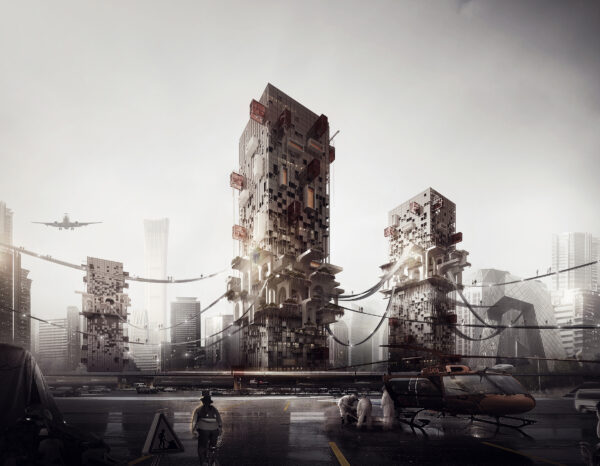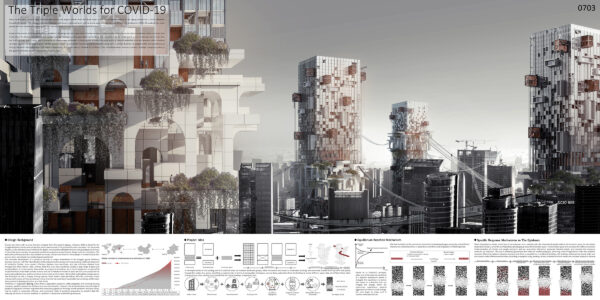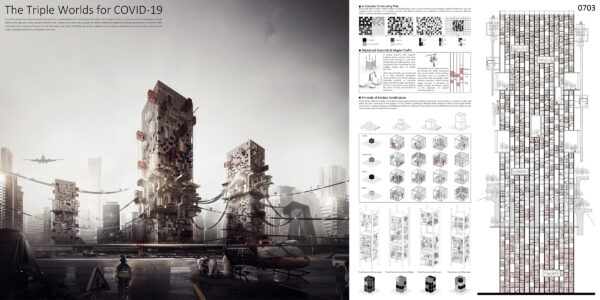Honorable Mention
2021 Skyscraper Competition
Yinan Qin, Bo Wei, Jingting Yan, Chao Xie
China
Since ancient times, humans have coexisted with viruses and plagues which—from the Black Death in the mid-fourteenth century to the raging coronavirus in 2019—threatens humankind’s survival. The relationship between humans and viruses implies and gives birth to a new mode of production and lifestyle. The outbreak of the COVID-19 pandemic has made people pay more attention to public hygiene and laid more stress on the need for isolation space than ever.
Based on the premise of the normalization of pandemics, the design features a new mode of human residence under extreme conditions where infectious diseases break out at any time in the future. It’s a fully enclosed three-part modular building. The lower part is a quarantine area for those who contract a virus; the middle part is a virus monitoring area for those who are in an unknown health status, which also serves as a buffer zone for people’s commuting and activities; the upper part is a space of residential units with absolute safety. A vertical structure connects the three parts with a magnetic levitation device, ensuring their functioning and mobility among them in the vertical direction. All people’s traffic and connections go through the health monitoring area in the middle of the building. This buffer zone is a “window of community” fully controllable under extreme conditions. Its height changes according to the number of healthy people, reducing the spread of the virus.
In our vision, people live in a box house where the whole unit is modularized but still, it can be personalized within a certain range. The boxes on each floor can move freely within the range defined by the slide rails, so they could go to different zones. Stacked arches, which not only guides the different traffic paths between the buildings but also implies the memory of the traditional architectural image of the past, form the buffer space in the middle; the flexible paths between buildings move accordingly as the windows slide up and down, presenting a new image of diversified and dynamic architectures in the future.

















